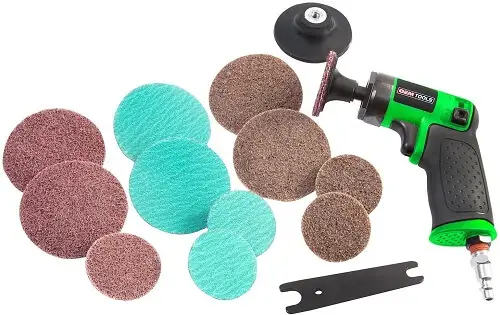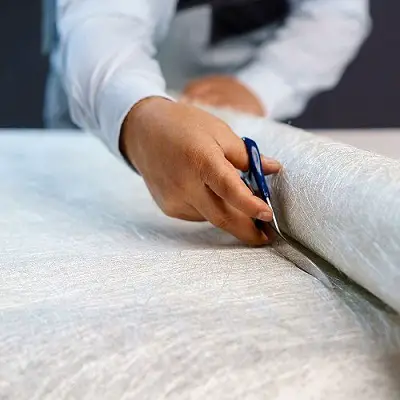Understanding the material and structure of your vehicle’s body is quite essential as it develops a better understanding of automobiles and helps you fix problems related to your car better and quicker.
Since the very start vehicles manufactured from steel due to their strength and durability. With time more elements added like Iron and Aluminum strengthens the material and make it go a long way.
Adding aluminum and alloys also prevents rusting which is a common problem for people living in humid areas.
Besides steel, iron, and aluminum, titanium and carbon fiber are also used. Despite these materials being very strong and robust, the former is quite heavy and the latter can be quite costly.
This is why aluminum is always a preference for automobile bodies; it is lighter, stronger, cheaper, and prevents rusting.
The next thing that plays a vital role in the prevention against rusting of your car’s body is the paint. The below-mentioned information will help you get a deeper understanding of the paint and what it does for your car. there are three layers of paint on the body, each having its own purpose.
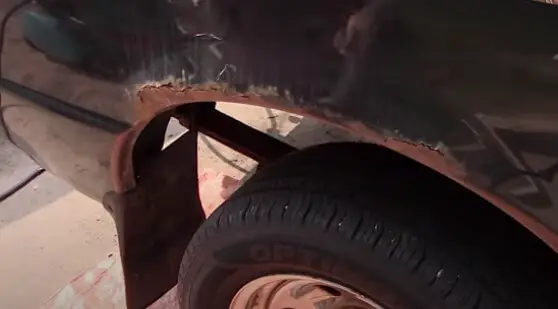
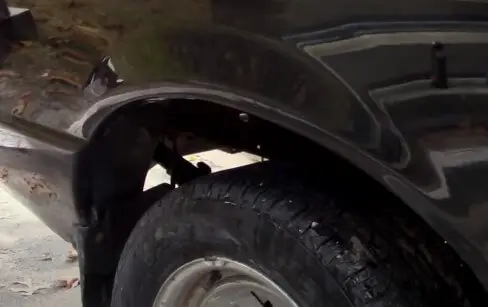
Understand Paint Layer of Car
First layer
The first layer serves as a primer to create a blank canvas for the next layer of paint to look more vivid and bright.
It goes on the metal; the thickness, however, varies from 8-38 microns based on the marque and the processes of individual plant operators. Modern vehicles have a thinner layer, thanks to the developing panel stamping technology.
The Second Layer
This coat is a semi-gloss, pigmented base layer that gives the vehicle its color. The layer is quite thin ranging from 13 microns to 38 microns. If the pigment is pearlescent, the flakes mix at this point.
The Third Layer
The final layer is a clear-coat also known as the lacquer. It’s a thick coat of about 30-102 microns. which provides protection against UV rays and oxidation. To keep the color shinier and make it last longer.
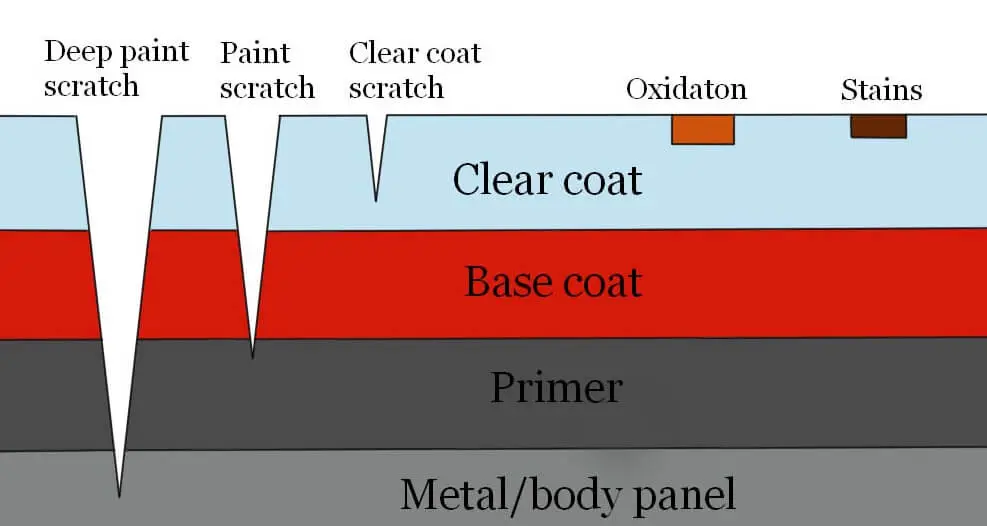
Causes of Rusty Holes in Vehicles
Rusting of vehicles is a common problem for people living in humid areas. This is why checking for rusty holes or spots should be a part of your maintenance routine. In case you notice any, immediately make efforts to get rid of it because a spot as little as an ink drop can speed. to the entire body.
I divide the causes of rust into three main categories, moisture, neglect, and chemical reactions. Let’s talk about some science.
When iron comes in contact with the air, it starts to oxidize. The reddish-brown substance that we call rust is an oxide of iron (Fe2O3). The iron body of your vehicle will oxidize with time as it’s constantly in contact with moisture or air. Especially if the paint has worn off, the process catalyzes.
Moisture
Moisture is poison to iron. At the point when the two substances come into contact with one another. It causes a nuclear response that outcomes in oxidation.
The clearest path for moisture to come into contact with the metal in your vehicle is a downpour. On the off chance that the climate is awful, ensure that your vehicle is very much secured.
Neglect
If you are a lazy person like I am, you might end up ignoring the maintenance which can leady to rusty holes. All things considered, a rust issue will deteriorate over time
Have your vehicle washed frequently, and make certain to take it to an auto expert whenever there’s any hint of an issue. Normal vehicle upkeep can help guarantee that you keep steady over any potential rusting issues.
Chemical Reaction
any vehicle proprietors use street salt to drop ice and snow from their vehicles during the chilly climate. Nonetheless, introduction to salt makes the metal more powerless against rusting, and the dissolving snow can discover its way into corners of your vehicle where it won’t vanish immediately. Salt can gather on your vehicle’s underbody and cause rusting after some time—and you may not understand it for quite a while.
How to fix rust holes without welding?
Method # 1 (for structural area)
If you are looking for the best way to fix rust holes without welding that does not only cost you less but is also quick and easy, here is what you needed:
Before getting started make sure to wear gloves, a mask, and goggles. The gloves will not only protect your hands but also keep the destructive oils from contaminating the surface.
It’s time to fix ‘them rusty holes’. Use a screwdriver to dig in the rusty holes to open them up. It will make it easier to fix them. Begin by sanding the already present paint off the surface to clear out the area that needs to fix.
Using an orbital sander will make the whole process way easier. You can also use sandpaper but that process is very tedious and won’t give the same results.
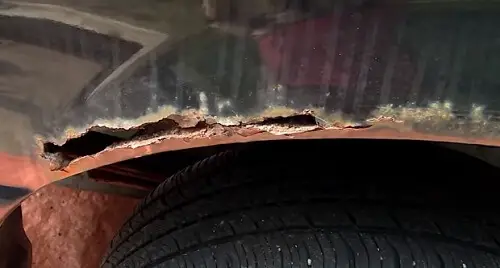
As you move forward in the process of fixing rusty holes, you’ll be needing an 80 grinder disc to eliminate and sort of debris that might come in your way. It will help you
After removing the old paint, gently hammer the affected area to get rid of the blockage. There will be loads of debris and dust all over for which you will be needing an air grinder. The compressed air will clean out the area in no time.
Usually, rusty holes occur at hard-to-reach places in the vehicles. The high-precision and smooth design of the air die grinder will make smoothing, deburring, chamfering, grinding, polishing, etc. pretty easy and quick. Now getting the panel down to the bare metal so you have a good base point on what needs to be cut out and where the rust ends
Take a disposable brush and thoroughly coat the rusted area (inside the hole as well as the surrounding area) with a rust remover. It will reduce the effort of excessive sanding.
Use the air grinder frequently to keep the area of any contamination. Sand it one more time with the orbital sander. To add precision to the operation, you can use sandpaper of various grits to get to the tough spots and eliminate the rust.
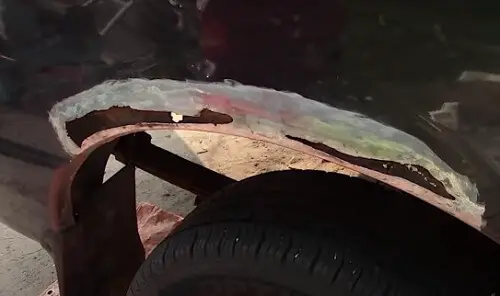
I suggest using 80-grit sandpaper as it does the job without ruining the surface. Try getting the assorted sandpaper. It is more affordable and you get more options for various surfaces.
Using the hammer again will help you remove indents and level the area. Make sure to do it gently and all over the affected area.
Once you remove all the rust and old paint, use a grease remover to clean the area and preparing it for repainting. Using a good quality grease remover is essential if you want your paint to last; it will remove all kinds of oils, dirt, and grease.
It’s time to fix the hole. Using the fiberglass method is not only easier but it saves the hassle of welding. Whenever I get asked how to fix rust holes on a car truck without welding, I advise the fiberglass method.
You’ll be needing some fiberglass cloth, some resin/epoxy, and the disposable brush you used earlier. Add hardener to the resin according to the ratio the packaging suggests and cut up some fiberglass pieces. Add paper using tape to the surrounding area to avoid the mess.
I always suggest cutting a small piece and preparing a small amount of resin. It makes the process easier and less messy.
Instead of coating the fiberglass with the resin, stuff the piece in the hole and add resin using a brush. It’s a cleaner and more efficient way. Make sure the fiberglass is saturating with resin in the hole. Adding tape onto it at the end of the process ensures a smoother finish.
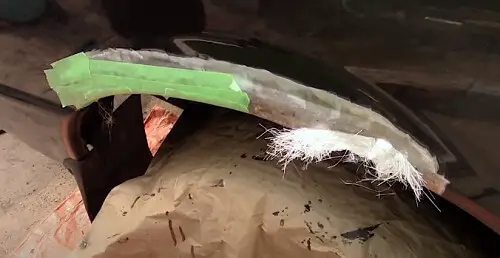
Now that the resin and fiberglass have sealed the hole completely, Now you need to wait for almost 6 to 7 hours to dry it once it is dry remove the tape it’s time to sand again and even out the outer layer. It is up to you if you want to use the orbital sander, but I would recommend the sandpaper as it gives you more control.
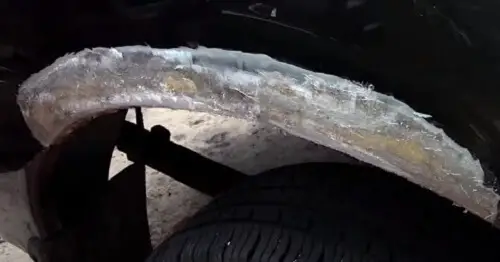
Now apply the body filler to even out the structure of the affected area. Use a plastic felt to apply it. Make sure to do this evenly, slowly, and allow it to completely dry before moving onto the next step.
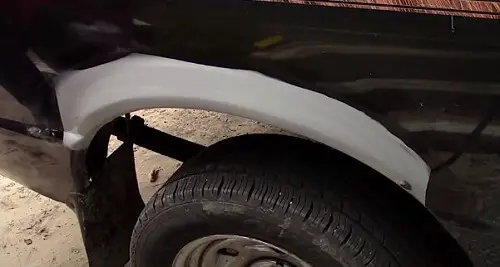
Using a putty is also an option, it is kneadable and you can fix odd spots with it. The putty is more firm in texture and viscosity so some people find it easier to work with.
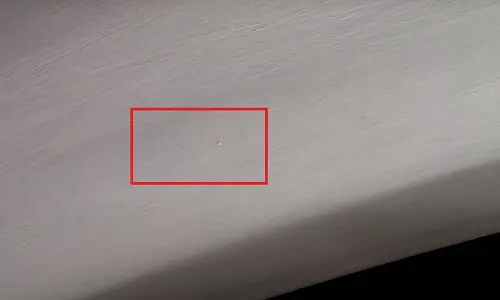
You might need to sand here as well to achieve the smoothest possible finish. After you are satisfy with the result, time to repaint.
Use a wax remover on the area you desire to repaint to ensure the primer application is smooth. Apply a primer to the base to ensure that the paint sticks better to it and goes a long way. I suggest using a self-etching primer; it performs way better.
Finally, apply the paint layer by layer. Use the grease remover for the surrounding areas to avoid any contaminant from ruining the paint. Finally, apply a layer of a clear-coat for the shine.
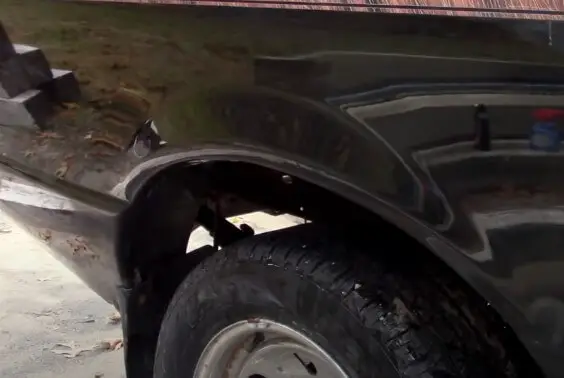
Method # 2 (for non-structural area)
This method is for the non-structural areas of your vehicle that catches rust like the edges of the door etc.
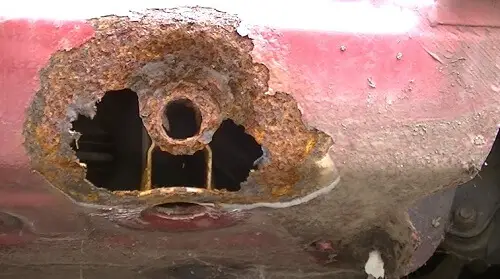
Start by removing the rust using an edged-tool like a screwdriver. Sanding is another good option it will thoroughly remove the rust.
You can use an orbital sander of 3m or 80-grit sandpaper to reach odd spots more conveniently. However, orbital sander makes the process fast so
I recommend that.
Once all the rust is gone, use a grease remover and remove all kinds of debris, oil, grease from the affected area.
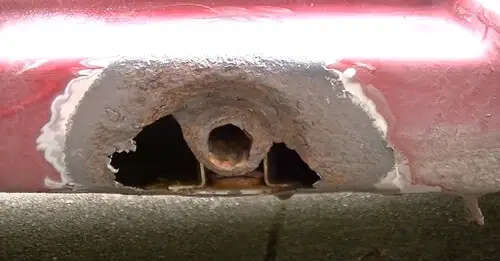
Tape up the area around the rust hole to avoid the mess. You can also use paper or old rags to coverup that area.
First, you need to coat the area with POR 15 and then wait for 20 to 30 minutes to dry. once it is dry cut 1” by 1” ½ of the fiberglass cloth and saturate each in POR thoroughly. Layer them up on the hole and make sure the outer coat remains smoot.
You can add more POR if needed.
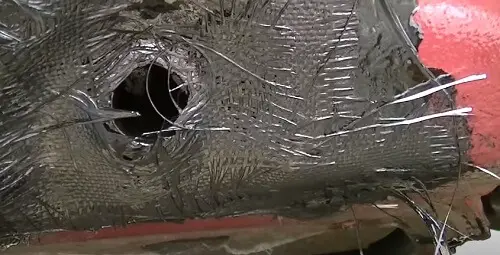
Let it sit overnight to dry and harden. Now apply 3-4 thin layers of rubberizing undercoating that will help pack everything in place and finalize the procedure.
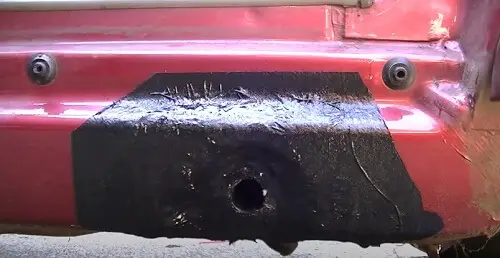
Finally, remove the tape and paper, and your good to go. The rust is gone, the hole is fixed in a way that’ll last. It’s a win by all means.

